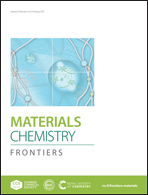Highly-magnetic mineral protein–tannin vehicles with anti-breast cancer activity†
Abstract
Anticancer hybrid mineral highly-magnetic protein–tannin vehicles are tunable and controllable external triggers for drug delivery systems. The saturation level of submicron particles of calcium carbonate with magnetic nanoparticles was achieved. The Brillouin light scattering technique and the movement determination of composites in the non-uniform magnetic field, as well as the SEM study of hybrid mineral highly-magnetic composites, made it possible to characterize the magnetic properties of the carriers and determine that 3 freezing/thawing cycles of magnetic nanoparticles are sufficient to obtain an optimal drug carrier. We have demonstrated that doxorubicin and mitoxantrone are effectively encapsulated in vehicles, while the encapsulated drugs are effectively stored in clean water and PBS. Anticancer hybrid mineral highly-magnetic protein–tannin vehicles have a higher cytostatic effect on MCF-7 breast cancer cells because of the best interaction of the cytostatics with DNA due to the inside-out structure compared with the NMUMG breast healthy cell line. Extra magnetic anticancer structures of the core–shell can be potentially used as objects for preserving antitumor drugs over time, due to the higher survival rate compared to the pure substance and the lack of release of antitumor drugs into model fluids.



 Please wait while we load your content...
Please wait while we load your content...